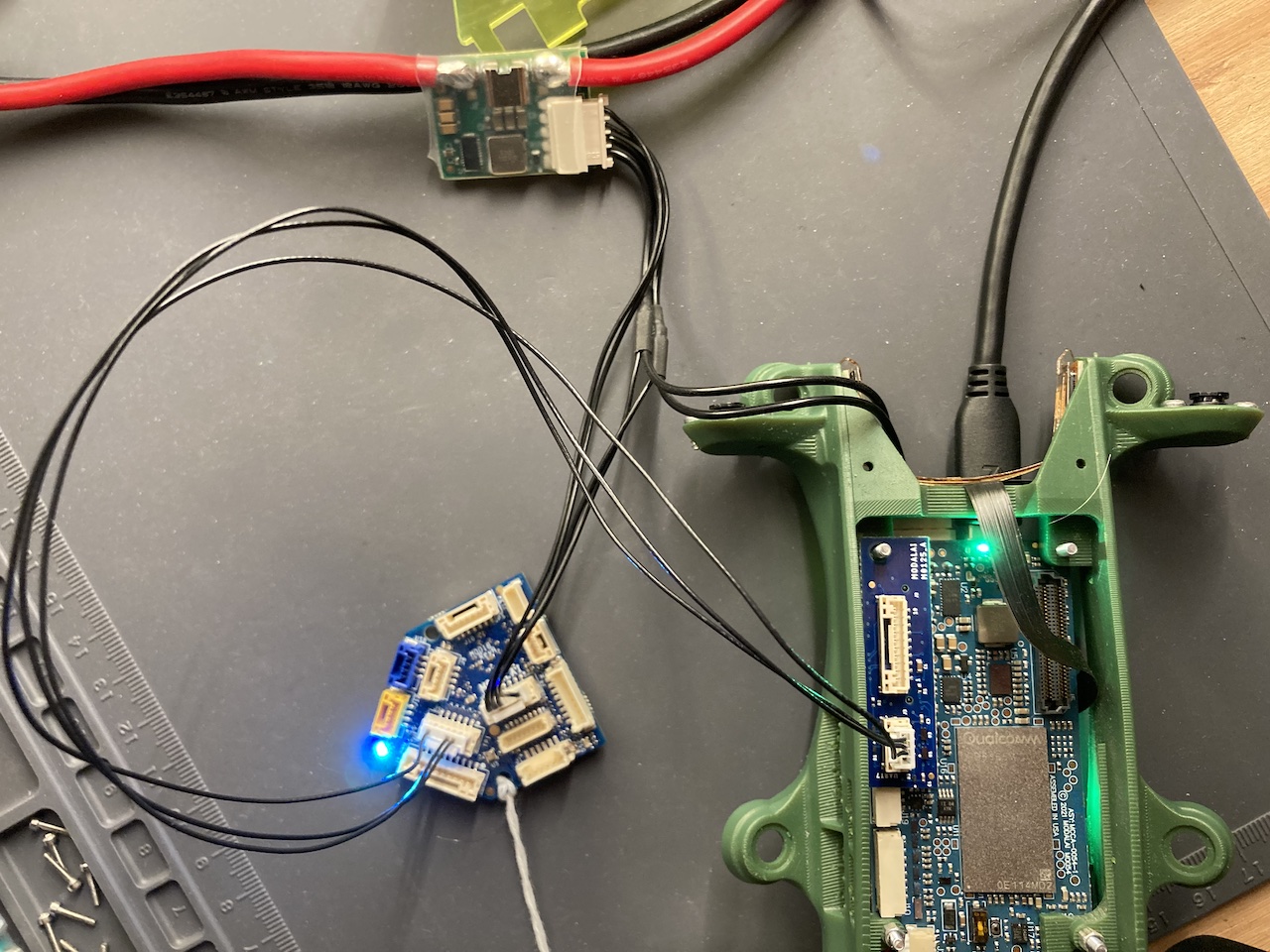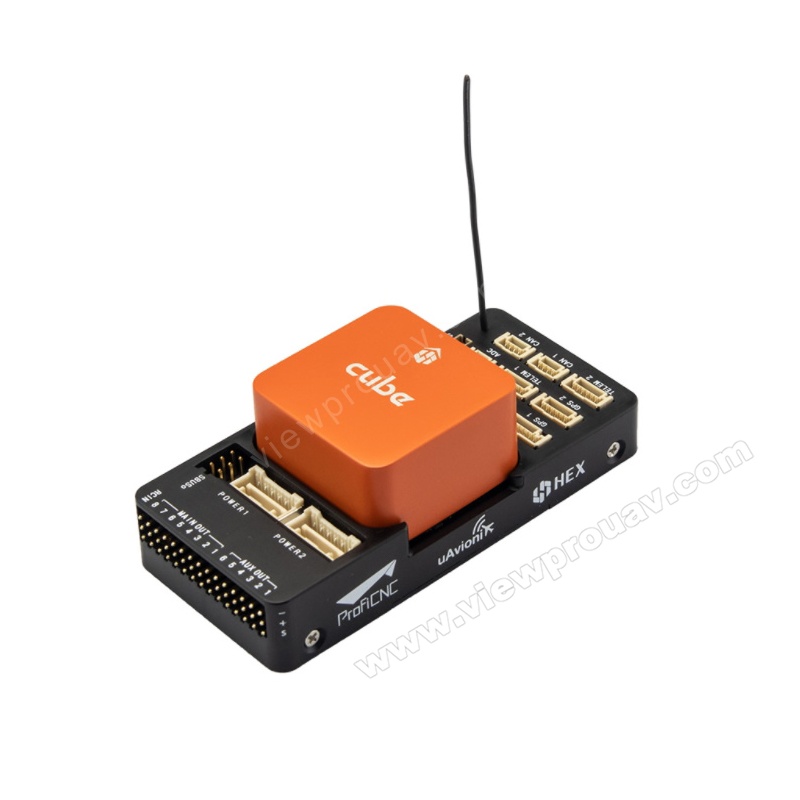Enhance Drone Efficiency with SparkNavi Drone Flight Controller and GNSS/INS Made in Taiwan
Enhance Drone Efficiency with SparkNavi Drone Flight Controller and GNSS/INS Made in Taiwan
Blog Article
The Value of Drone Flight Controllers in Modern Aerial Modern Technology: Secret Parts and Their Influence
In the realm of modern-day aerial innovation, drone flight controllers serve as the crucial systems that manage a drone's efficiency and abilities. As markets progressively count on drones for applications varying from farming to monitoring, the advancing technology within trip controllers elevates vital inquiries about their future effect and potential improvements.

Overview of Drone Trip Controllers
In the world of aerial technology, drone trip controllers act as the important brain of unmanned aerial vehicles (UAVs), allowing precise maneuverability and security during trip. These advanced systems integrate sensing unit information, processing formulas, and control inputs, enabling drones to perform complex trip patterns with precision.
Drone trip controllers use various sensing units, such as gyroscopes, accelerometers, and GPS components, to assess the UAV's orientation and position in real-time. This information is crucial for preserving balance and making sure secure operation in varied environmental problems. The controllers process this data to make instant modifications to the drone's motors, permitting smooth shifts and responsive handling.
Additionally, flight controllers are outfitted with sophisticated software application that sustains functions such as waypoint navigating, obstacle evasion, and autonomous trip abilities. This software program is essential for both leisure and industrial applications, where integrity and precision are paramount. As drone modern technology remains to advancement, the advancement of trip controllers will certainly play a crucial duty in boosting UAV safety, capability, and flexibility, ultimately expanding their applications throughout numerous markets.
Trick Elements Explained
Understanding the fundamental elements of drone flight controllers is crucial for realizing just how these systems operate effectively. At the heart of a flight controller is the microcontroller, which functions as the brain, refining information from different sensing units and implementing commands. Essential sensors include accelerometers and gyroscopes, which determine the drone's positioning and movement, supplying crucial feedback for stablizing.
An additional trick part is the measure, which gauges altitude by determining air pressure, while GPS components provide positional information, enabling self-governing navigating - SparkNavi drone flight controller and GNSS/INS made in taiwan. The flight controller likewise interfaces with Electronic Speed Controllers (ESCs), which control the rate of the drone's motors based on the controller's commands
Interaction modules, such as radio receivers, promote remote control input, enabling drivers to send out commands in real-time. Furthermore, some trip controllers incorporate software program that can handle complex algorithms for waypoint navigating, flight preparation, and telemetry data analysis.
Duty in Trip Security
Central to keeping flight stability, drone trip controllers utilize advanced algorithms to refine sensing unit data and make real-time changes. These controllers are equipped with a variety of sensors, including gyroscopes, accelerometers, and measures, which continually check the drone's elevation, speed, and orientation. By translating this data, the trip controller can recognize deviations from the preferred flight course and react promptly to preserve stability.
For example, if a drone experiences an unexpected gust of wind, the flight controller can swiftly adjust the electric motor rates to counteract the disturbance, guaranteeing a stable trip trajectory. This ability is vital not just for manual trip procedures yet additionally for executing complex maneuvers and maintaining smooth trip in numerous ecological conditions.
.jpg)
Moreover, the sophisticated formulas made use of in flight controllers, such as PID (Proportional-Integral-Derivative) control, enable for fine-tuning of the drone's feedback to modifications in flight conditions. By maximizing these control criteria, trip controllers can enhance stability, improve responsiveness, and reduce pilot work. Inevitably, the function of flight controllers in guaranteeing trip security is essential for the safe and efficient procedure of contemporary drones throughout diverse applications.
Effect On Autonomous Workflow

Autonomous operations are particularly crucial in varied applications such as farming, surveillance, and shipment services. With boosted flight controllers, drones can autonomously browse established routes, efficiently collect data, and adjust to dynamic environments. click now This ability decreases the need for continuous human oversight, therefore increasing operational effectiveness and safety and security.
Moreover, the application of artificial intelligence methods within flight controllers enables drones to improve their performance gradually by gaining from previous missions. This flexibility leads the way get redirected here for a lot more innovative autonomous applications, such as throng technology, where multiple drones collaborate their actions to achieve a typical objective.
Future Trends in Flight Controllers
Advancements in trip controller modern technology are poised to reinvent drone abilities in the coming years. One substantial pattern is the integration of expert system (AI) and artificial intelligence formulas, enabling drones to learn from their settings and make real-time choices. This development will certainly boost autonomous navigating, obstacle evasion, and objective planning, significantly improving functional effectiveness and safety.
In addition, the development of sophisticated sensing unit modern technologies, such as LiDAR and multispectral imaging, will supply flight controllers with richer data inputs. This will certainly assist in more innovative analytical abilities, permitting drones to perform intricate jobs, such as accuracy rescue, agriculture and search, and facilities assessments with unmatched precision.
An additional emerging fad is the miniaturization of trip controller parts, which will result in lighter and much more small drones. This development will extend flight durations and payload capabilities, making drones a lot more versatile for different applications.
Conclusion
To conclude, drone flight controllers work as crucial parts in modern-day aerial modern technology, making certain security and accuracy in ability to move via the assimilation of microcontrollers, accelerometers, and GPS modules. SparkNavi drone flight controller and GNSS/INS made in taiwan. Their ability to allow self-governing operations and adjust to various applications underscores their significance across multiple sectors. As developments in synthetic intelligence and sensing unit innovation remain to arise, the possibility for improved capabilities Bonuses and boosted functional effectiveness in drone systems will likely reshape the future of aerial applications
Central to preserving flight security, drone flight controllers make use of innovative algorithms to refine sensor information and make real-time adjustments. By translating this information, the flight controller can determine discrepancies from the wanted trip path and respond promptly to preserve stability.
In addition, the sophisticated formulas used in flight controllers, such as PID (Proportional-Integral-Derivative) control, enable for fine-tuning of the drone's action to modifications in trip problems. Ultimately, the function of flight controllers in making sure trip security is important for the secure and effective procedure of modern drones across varied applications.
The developments in drone trip controllers not just improve trip stability however additionally considerably affect self-governing procedures. SparkNavi drone flight controller and GNSS/INS made in taiwan.
Report this page